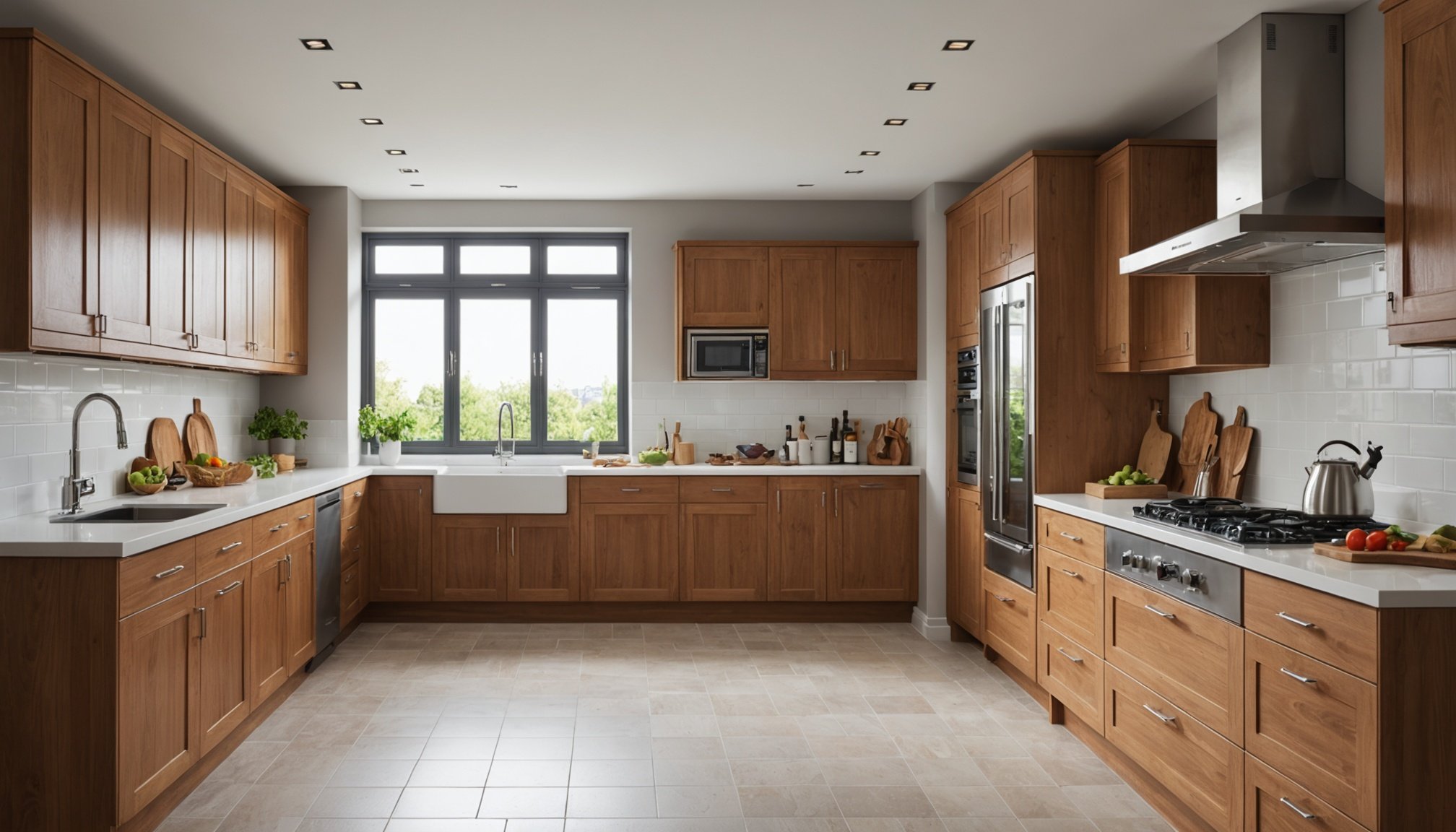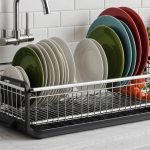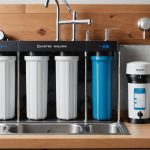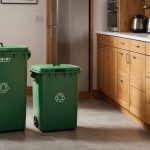Importance of Kitchen Air Quality
Maintaining optimal kitchen air quality is crucial, as it directly affects health. Cooking can produce significant levels of indoor air pollution, introducing harmful particles into your environment. Inadequate kitchen ventilation contributes to high pollutant concentrations, worsening conditions such as asthma, allergies, and other respiratory issues.
Statistics reveal that kitchens can experience a sharp rise in indoor pollutants, sometimes exceeding outdoor levels by 3-4 times during cooking activities. This indicates the pressing need to address the health implications of poor air quality in this essential household area.
Topic to read : Unlock culinary precision: the ultimate guide to selecting the ideal kitchen timer in the uk
Improving kitchen air quality offers several benefits. Enhanced ventilation and the reduction of pollutants can lead to clearer respiratory pathways, reducing the risk of headaches, dizziness, and long-term health concerns.
Key strategies include installing effective exhaust systems and considering air purifiers to trap potential pollutants. Moreover, selecting low-VOC materials in renovation projects can significantly lower exposure risks. These actions safeguard your wellbeing while creating a more enjoyable cooking environment. An awareness of kitchen air quality and its implications empowers you to make informed decisions for a healthier home.
Have you seen this : The Ultimate Guide to the Best Under-Sink Water Filtration Solutions in the UK: Top Brands Revealed
Effective Ventilation Techniques for Kitchens
Effective kitchen ventilation is essential in minimizing indoor air pollution and promoting a healthy environment. Understanding the different methods can help you choose the best option for your home.
Utilizing Exhaust Fans
Exhaust fans are a powerful tool for extracting cooking odours and airborne particles. Installed directly above stoves, these fans draw out smoke and vapours, reducing particle buildup. A well-maintained exhaust fan, equipped with the necessary power, is crucial to ensuring the proper removal of pollutants, maintaining a safer kitchen environment.
Importance of Open Windows
Taking advantage of natural ventilation by opening windows is an eco-friendly way to boost airflow in your kitchen. This not only dilutes and reduces airborne contaminants but also promotes a refreshing atmosphere. While natural ventilation is a cost-effective measure, it is most beneficial when combined with other ventilation systems, especially in smaller or enclosed spaces.
Mechanical Ventilation Systems
Mechanical systems provide a comprehensive approach to kitchen ventilation, ensuring consistent airflow. These systems, which might include ducted hood ranges or whole-house ventilation solutions, offer precise control over air circulation. Proper planning and selection based on your kitchen size and layout are vital. Benefits include maintaining clean air quality and improving overall indoor environmental comfort.
Incorporating Air Purifiers
Integrating air purifiers into your kitchen is an effective method to combat indoor air pollution. They improve indoor air quality and mitigate the health implications associated with cooking. With various types available, choosing the right purifier is essential for maximizing effectiveness.
Types of Air Purifiers Suitable for Kitchens
There are several air purifier options suited for kitchens, including mechanical filters, ionizers, and hybrid models. Mechanical filters, especially those with HEPA filters, are adept at capturing small particles such as smoke, dust, and pet dander. Ionizers release charged ions to bond with pollutants, which fall to the nearest surface, while hybrid models combine both technologies.
HEPA Filters and Kitchen Air Quality
HEPA filters, or high-efficiency particulate air filters, play a crucial role in enhancing kitchen air quality. They are specifically designed to trap 99.97% of particles as small as 0.3 microns. This capacity significantly reduces pollutants, protecting your family’s respiratory health during and after cooking activities.
Placement Strategies for Maximum Effectiveness
For optimal performance, place your air purifier near the cooking area where contaminants most frequently originate. Additionally, ensure that there is unobstructed airflow around the unit. Pay attention to the room size and purifier capacity to ensure the unit fits your kitchen’s needs.
Selecting Low-VOC Materials
Selecting low-VOC materials during a kitchen remodel is indispensable for ensuring a healthier living space. VOCs, or volatile organic compounds, are chemicals that easily evaporate into the air, leading to potential health risks upon inhalation. By choosing low-VOC options, you significantly reduce these emissions, promoting better kitchen air quality.
Benefits of Low-VOC Products
Opting for low-VOC products primarily results in fewer health implications, like reduced risk of headaches and respiratory issues, associated with indoor air pollution. These products contribute to a sustainable, eco-friendly living space by minimizing detrimental chemical emissions.
Popular Low-VOC Options for Kitchens
Various materials in kitchens can be low-VOC, including paints, adhesives, and flooring. Low-VOC paints reduce air pollution while maintaining vibrant colour quality. Similarly, low-VOC adhesives and sealants in cabinetry and counters ensure minimal chemical exposure.
Certification and Regulation Information
To ascertain the authenticity of low-VOC materials, look for certifications such as GreenGuard and Energy Star, which ensure compliance with environmental standards. Regulations are pivotal, as they foster transparency and guide manufacturers in creating sustainable products. Reliably sourcing materials from certified providers guarantees an environmentally sound and healthier kitchen environment.
Regular Maintenance and Cleaning Tips
Maintaining a pristine kitchen environment is pivotal for optimal air quality upkeep. Routine kitchen maintenance combined with non-toxic cleaning routines enhances a healthier space for cooking and gathering. Consistent cleaning also minimizes indoor air pollution and promotes an eco-friendly atmosphere.
Recommended Cleaning Products
Employing green, non-toxic cleaning products ensures effective sanitation without harmful residue. Opt for biodegradable detergents and natural disinfectants like vinegar or baking soda, which are kind to both surfaces and the environment. These choices contribute significantly to maintaining superior indoor air quality.
Schedule for Maintaining Kitchen Appliances
Regular servicing of kitchen appliances is essential. Clean extraction filters and inspect exhaust fans every few months, ensuring they function efficiently to remove pollutants. Similarly, air purifiers require timely filter changes to preserve their efficacy in cleansing the air.
Importance of Minimizing Clutter
Clutter-free kitchens facilitate seamless air circulation and reduce the chance of dust and pollutants accumulating. Organise countertops and storage areas regularly to eliminate non-essential items. This practice not only enhances the kitchen’s functionality but also supports healthier airflow and hygienic conditions.
Engaging in these maintenance and cleaning strategies fosters a refreshing, health-conscious kitchen ambiance.
Expert Insights and Resources
Stay informed on kitchen air quality with expert advice and trusted resources. Engaging with specialists not only enriches your understanding but also equips you to tackle indoor air pollution effectively.
Interviews with Air Quality Experts
Gaining insights from air quality experts reveals the intricate impacts air pollution has on health. Specialists elucidate the importance of maintaining clean air in kitchen spaces, emphasising the role of effective ventilation, air purifiers, and low-VOC materials. These interviews often highlight tailored strategies for home environments, aiding you in making informed choices for well-being.
Citing Relevant Research Studies
Research studies provide crucial evidence supporting practices to mitigate indoor air pollution. Recent studies quantify pollution levels, indicate popular contaminant sources, and articulate potential health implications. Evaluating and interpreting these findings sheds light on effective interventions, enhancing kitchen air quality through informed decisions.
Links to Regulatory Guidelines
Accessing regulatory guidelines offers standards for acceptable indoor air quality. These guidelines, established by reputable organisations, direct safe material use and endorse effective ventilation practices, offering a framework for sustainable air management. Incorporating this guidance ensures compliance with health standards, fostering a healthier kitchen environment.








